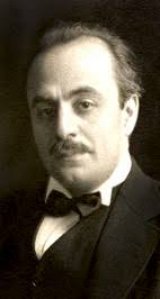Analysis of On Beauty
Kahlil Gibran 1883 (Bsharri, Mount Lebanon Mutasarrifate) – 1931 ( New York City)
And a poet said, Speak to us of Beauty.
And he answered:
Where shall you seek beauty, and how shall your find her unless she herself be your way and your guide?
And how shall you speak of her except she be the weaver of your speech?
The aggrieved and the injured say, “Beauty is kind and gentle.
Like a young mother half-shy of her own glory she walks among us.”
And the passionate say, “Nay, beauty is a thing of might and dread.
Like the tempest she shakes the earth beneath us and the sky above us.”
The tired and the weary say, “Beauty is of soft whisperings. She speaks in our spirit.
Her voice yields to our silences like a faint light that quivers in fear of the shadow.”
But the restless say, “We have heard her shouting among the mountains,
And with her cries came the sound of hoofs, and the beating of wings and the roaring of lions.”
At night the watchmen of the city say, “Beauty shall rise with the dawn from the east.”
And at noontide the toilers and the wayfarers say, “We have seen her leaning over the earth from the windows of the sunset.”
In winter say the snow-bound, “She shall come with the spring leaping upon the hills.”
And in the summer heat the reapers say, “We have seen her dancing with the autumn leaves, and we saw a drift of snow in her hair.”
All these things have you said of beauty,
Yet in truth you spoke not of her but of needs unsatisfied,
And beauty is not a need but an ecstasy
It is not a mouth thirsting nor an empty hand stretched forth,
But rather a heart enflamed and a soul enchanted.
It is not in the image you would see nor the song you would hear,
But rather an image you see though you close your eyes and a song you hear though you shut your ears.
It is not the sap within the furrowed bark, nor a wing attached to a claw,
But rather a garden for ever in bloom and a flock of angels for ever in flight.
People of Orphalese, beauty is life when life unveils her holy face.
But you are life and you are the veil.
Beauty is eternity gazing at itself in a mirror.
But you are eternity and you are the mirror.
| Scheme | AXBX XCXC XXDD XX XXABAXXXXXX XXEE |
|---|---|
| Poetic Form | |
| Metre | 00101111110 0110 11111001111001101111011 01111100111010111 001001011011010 10110111011011011 0010011101011101 10101101011001011 010001011011111101010 01111010010111101101 1010111101001010 0101101110010110010110 11010101011011101101 01101001111101010011010101 0101011111101100101 000101011111010101010110111001 111111110 10111110111010 010110111100 1110111110111 110011001010 1110010111101111 11011011111110011111111 1110101010110101101 1100101100100111011001 1011101111010101 111101101 1010100101010010 1110100011010 |
| Characters | 2,204 |
| Words | 410 |
| Sentences | 22 |
| Stanzas | 6 |
| Stanza Lengths | 4, 4, 4, 2, 11, 4 |
| Lines Amount | 29 |
| Letters per line (avg) | 55 |
| Words per line (avg) | 14 |
| Letters per stanza (avg) | 266 |
| Words per stanza (avg) | 68 |
Font size:
Citation
Use the citation below to add this poem analysis to your bibliography:
Style:MLAChicagoAPA
"On Beauty" Poetry.com. STANDS4 LLC, 2024. Web. 18 Apr. 2024. <https://www.poetry.com/poem-analysis/54029/on-beauty>.


Discuss this Kahlil Gibran poem analysis with the community:
Report Comment
We're doing our best to make sure our content is useful, accurate and safe.
If by any chance you spot an inappropriate comment while navigating through our website please use this form to let us know, and we'll take care of it shortly.
Attachment
You need to be logged in to favorite.
Log In